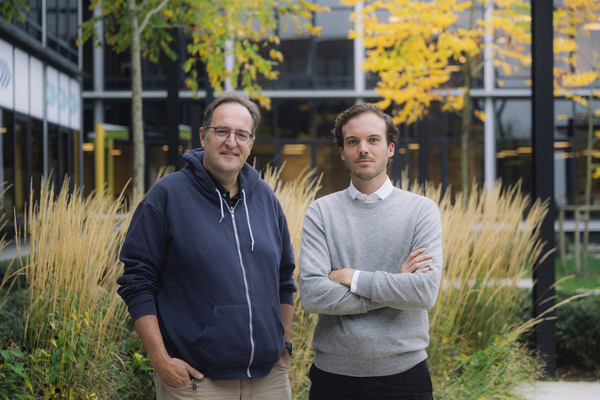Save money, protect the planet, strengthen your business.
Sponsored by CDPHow disclosing supply chain environmental data helps companies stay competitive, resilient and ready for the future.

In today’s volatile world, companies that disclose their environmental impact are not just doing the right thing, they’re doing the smart thing. Through CDP’s global disclosure system, businesses are turning transparency into opportunity, managing risk and building resilient supply chains, while opening up powerful opportunities for growth, innovation and investment.
As we near the end of 2025, whether you are reading this in New York or New Delhi, every business has felt the pressure of a turbulent global economy. From inflation and energy price spikes to material shortages and unpredictable geopolitical shocks, the headwinds companies face are compounding. And layered across all of this is an even greater systemic threat: environmental risk.
Environmental risk is financial risk
Environmental risk is one of the greatest threats to economic resilience. Climate change has already caused a staggering $3.6 trillion in damage since 2000, while our latest research shows that more than two thirds of companies (67 per cent) have identified environmental risks with substantive financial effects. It’s not a matter of opinion that climate change is disrupting operations and racking up significant costs for companies. Environmental risk is very clearly also financial risk and operational risk.
The hidden threat: supply chains
For most companies, those financial risks lie deep in their supply chains, where each environmental disruption translates directly into increased costs or even failure to deliver, hitting customers and profits. Scope 3 emissions are on average 26 times greater than a business’s operational emissions, while around 90 per cent of consumer goods companies’ environmental impacts come from their supply chains. And yet, firms are twice as likely to focus on measuring only their operational emissions.
This creates dangerous blind spots, leaving businesses exposed to hidden vulnerabilities and regulatory pressure. In a world of complex, interconnected value chains, what you don’t measure can, and will, hurt you.
The solution: measure, manage, act
So what’s the solution? The first step towards managing risk is understanding it. Environmental disclosure is the foundation for action. From this can flow all the decisions you need to make to manage risk and grasp opportunities, from accessing capital to boosting your business competitiveness.
At CDP, the world’s only independent environmental disclosure system, we work with nearly 25,000 of the world’s leading companies to help them measure – and, crucially, manage – their climate, nature, water and plastics impacts by reporting primary environmental data and using it to make Earth-positive decisions that are good for business and good for the planet.
The resulting data provides actionable insights for businesses, that is used to inform procurement decisions, strengthen supplier engagement and benchmark performance across value chains.
Streamlined, standardised, strategic
We also work hard to ensure a strong return on investment in reporting efforts, by enabling the data to have the greatest possible impact.
Our questionnaires are aligned with the world’s most relevant environmental frameworks – such as those of the International Sustainability Standards Board (ISSB) and the Taskforce on Nature-related Financial Disclosures (TNFD) – ensuring that one disclosure through CDP delivers many uses, for many stakeholders, from customers to investors, and data that’s comparable, decision-ready and recognised worldwide.
CDP data drives change – and savings
For 18 years, CDP has worked with companies to uncover and address hidden supply chain risks, helping them see the full picture, act faster and build supplier resilience at scale.
Our Supply Chain Program is now a global network, connecting more than 270 leading corporate buyers and over 640 investors. It engages thousands of suppliers worldwide with tailored support to deliver unparalleled data, enabling members to understand supplier performance today and predict readiness for tomorrow.
CDP Supply Chain Program members use this data to build credible Scope 3 inventories, embed sustainability directly into procurement, reward suppliers driving progress and support those who need to catch up. It helps companies future-proof their supply chains, with our research showing that large organisations have saved $54 billion by cutting emissions through supplier engagement.
For example, Supply Chain Program member and Brazilian cosmetics producer, Grupo Boticário, collects vital emissions data from suppliers each year. This data helps the company better understand how to tailor engagement and ultimately meet its climate goals. The company created the Partner Assessment and Development Program to recognise and promote sustainability best practices, with suppliers representing 65 per cent of the company’s total procurement spend participating.
This is the power of data-driven decision making: tangible financial savings, an enhanced reputation and stronger, more resilient supply chains.
A new era of business resilience
The time for thinking environmental action is a barrier to growth is over. As environmental impacts and their costs accelerate, business bottom lines are being hit across the globe. The companies that disclose data, manage their impact and act are not just mitigating harm, they are gaining a competitive edge.
Transparency builds trust. Data drives innovation. And disclosure transforms risk into resilience for companies. Together, we are driving systemic change and building resilient, future-ready supply chains, proving that Earth-positive economics is just good economics. We’d love you to join us on this journey as a member of our Supply Chain Program.
You can find out more about joining CDP’s Supply Chain Program here


Business Reporter Team
You may also like
Most Viewed
Winston House, 3rd Floor, Units 306-309, 2-4 Dollis Park, London, N3 1HF
23-29 Hendon Lane, London, N3 1RT
020 8349 4363
© 2025, Lyonsdown Limited. Business Reporter® is a registered trademark of Lyonsdown Ltd. VAT registration number: 830519543





